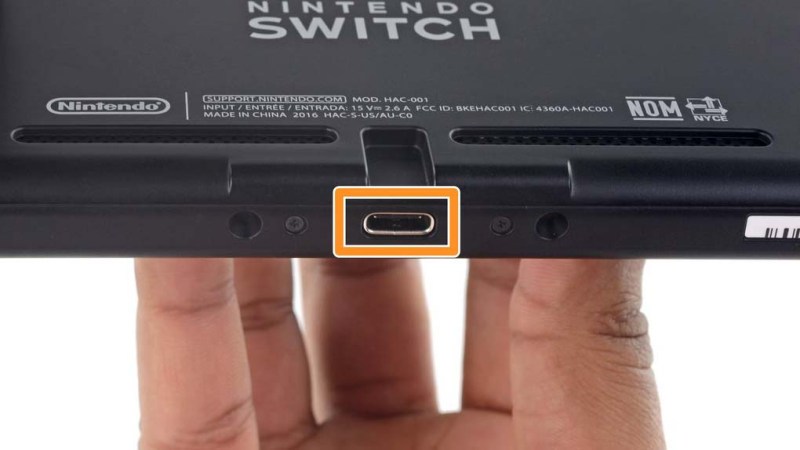Historically gaming consoles are sold at little-to-no profit in order to entice customers with a low up-front price. The real profits roll in afterwards from sales of games and accessories. Seeking a slice of the latter, aftermarket accessory makers jump in with reverse-engineered compatible products at varying levels of “compatible”.
When the Nintendo Switch was released with a standard USB-C port for accessories, we had hoped those days of hit-or-miss reverse engineering were over, but reality fell short. Redditor [VECTORDRIVER] summarized a few parts of this story where Nintendo deviated from spec, and accessory makers still got things wrong.
Officially, Nintendo declared the Switch USB-C compliant. But as we’ve recently covered, USB-C is a big and complicated beast. Determined to find the root of their issues, confused consumers banded together on the internet to gather anecdotal evidence and speculate. One theory is that Nintendo’s official dock deviated from official USB-C dimensions in pursuit of a specific tactile feel; namely reducing tolerance on proper USB-C pin alignment and compensating with an internal mechanism. With Nintendo playing fast and loose with the specs, it makes developing properly functioning aftermarket accessories all the more difficult.
But that’s not the only way a company can slip up with their aftermarket dock. A teardown revealed Nyko didn’t use a dedicated chip to manage USB power delivery, choosing instead to implement it in software running on ATmega8. We can speculate on why (parts cost? time to market?) but more importantly we can read the actual voltage on its output pins which are too high. Every use becomes a risky game of “will this Switch tolerate above-spec voltage today?” We expect that as USB-C becomes more common, it would soon be cheapest and easiest to use a dedicated chip, eliminating the work of an independent implementation and risk of doing it wrong.
These are fairly typical early teething problems for a new complex technology on their road to ubiquity. Early USB keyboard and mice didn’t always work, and certain combination of early PCI-Express cards and motherboards caused damage. Hopefully USB-C problems — and memories of them — will fade in time as well.
[via Ars Technica]
[Main image source: iFixit Nintendo Switch Teardown]
















While USB-C is a minefield at the moment. I remember USB2 being a huge problem at introduction as well. With many USB1.1 devices failing to work on USB2 ports. Same happened with USB3, my ~10 year old laptop features a single USB3 port rest is USB2. And many devices do not work properly in the USB3 port.
I hope things will settle down like they have for USB2. But USB-C is a lot more complex. And things like reported on HaD already and things like the audio adapter issues are making it a real minefield for any consumer. Including the tech minded people like ourselves.
https://en.wikipedia.org/wiki/USB-C#Compatibility_with_audio_adapters
USB3 has extra contacts for the super-speed part. An older USB2 or USB1.1 device will only contact the older contacts and work with a physically separate (on the same connector) USB2 chip+stack.
That said: My laptop with one USB3 port used to have a power problem on one of the ports. Linux wouldn’t turn power back on after a sleep.
USB3 also has issues with radio frequency interference.
https://www.intel.com/content/www/us/en/products/docs/io/universal-serial-bus/usb3-frequency-interference-paper.html
I had to deal with that at the time. I seem to recall it being a Windows 7 driver issue. Same story, USB2 device works fine in USB2 ports and failing on USB3 ports. Had no issues on Win 8, OS X, or Linux.
I had a USB 1.0 motherboard, I think the standard’s tradition is to start as a minefield now…
I use my Switch’s AC adaptor on my Apple Macbook Pro, and my MBP’s AC adaptor to charge the Switch.
Hmm, that’s never worked for me. The switch always charges waayyy to slowly for comfort. Any tips?
It looks like even the dedicated chips have some questionable design choices. The 15V pin is adjacent to one of the signaling pins which is only 5V tolerant (at least in some chips). So if your connector breaks or is mechanically off spec… zap. Since this isn’t a high speed signaling pin I’m quite confused why the spec wouldn’t require it to be 15V tolerant just on general principle.
The issue with charging is unfortunate. The Switch dock is huge and rather pricey, while the compact third party docks are potentially damaging. The safe way to get a different dock is to buy or 3d print a shell to drop in the official hardware.
Since damned near EVERYONE is reporting this incorrectly:
– The female Type-C port in the Switch is standards-compliant physically, electrically, and in terms of protocol (to the minimum requirements at least).
– The male Type-C captive plug in the Switch dock is NOT physically compliant (outer shell is undersized), is electrically compliant, and is letter-of-the-spec protocol compliant (not using a standard Alternate Mode protocol, but not advertising that it does either).
– The male Type-C plug in the Nyko dock is NOT physically compliant (undersized shell, and the registration pins do not have the spring-actuated cover to minimise off-axis insertion). It is NOT electrically compliant, as it dumps 9V onto the CC pin.
It’s that ‘9V on the CC pin’ issue that’s the killer. The spec sheet requires the CC pin operate at logic voltage, and the transceiver chip in the switch can tolerate up to 5V.